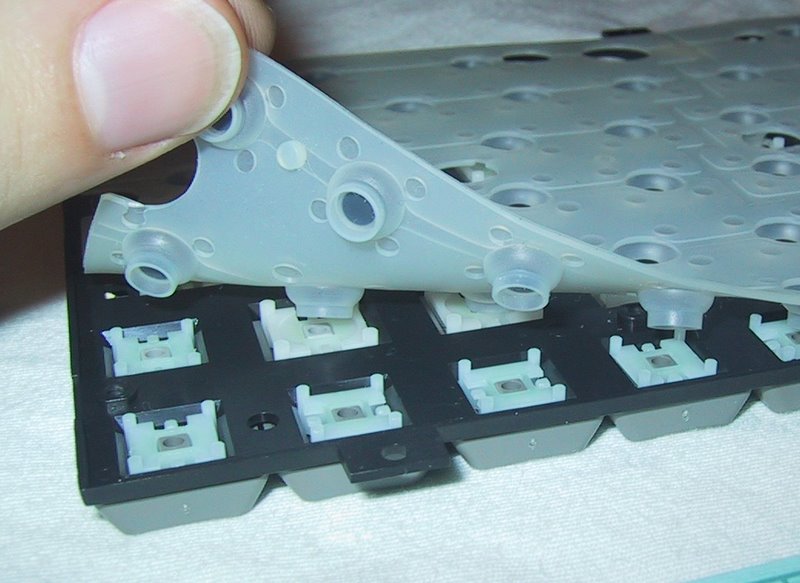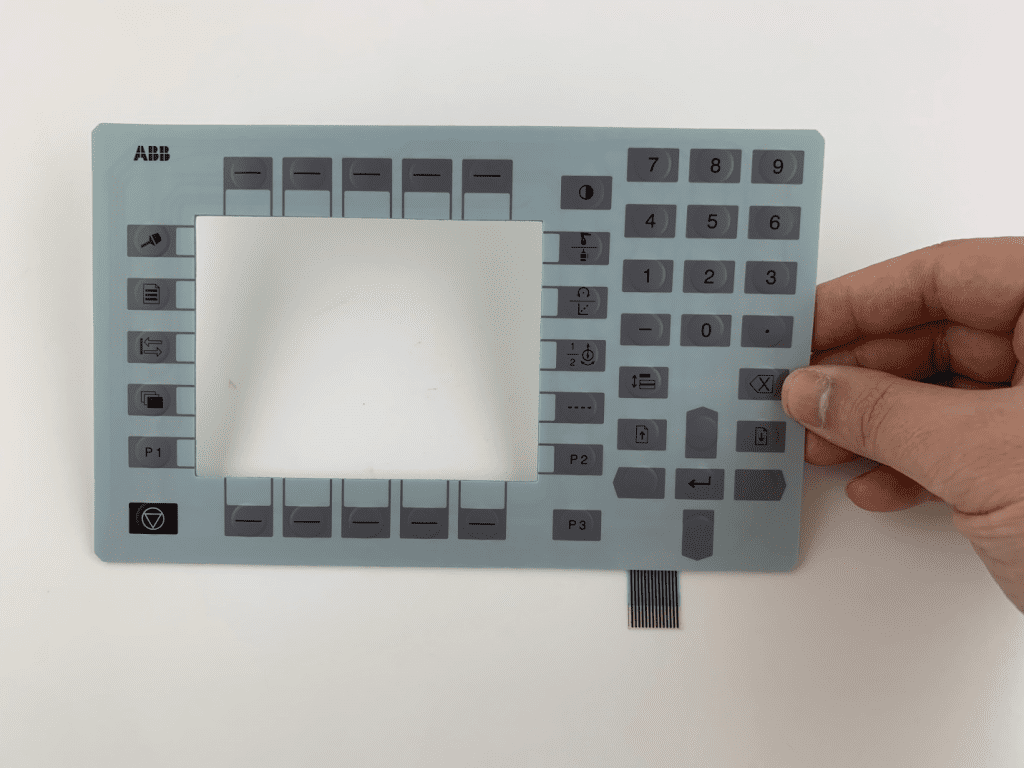Ensuring Quality and Longevity with Membrane Switches in Electronics
Wiki Article
Discover Just How Membrane Switches Function and Their Function in Modern Electronics
Membrane Switches represent an innovative integration of innovation and style within the world of modern electronics, acting as important user interfaces in numerous gadgets. Consisted of numerous layers, these switches make use of pressure-sensitive devices to help with customer interaction. Their applications extend different industries, from consumer electronics to clinical equipment, highlighting their convenience and significance. Recognizing the details of Membrane button functionality and their more comprehensive ramifications in improving individual experience welcomes more expedition right into their layout, benefits, and the innovative advancements shaping their future in innovation.
What Are Membrane Buttons?

Membrane switches are differentiated by their longevity and resistance to environmental aspects, such as dirt, dampness, and extreme temperature levels. They can be tailored with numerous graphics, shades, and responsive feedback choices, improving individual experience while preserving aesthetic appeal - membrane switches. Additionally, the consolidation of printed circuits enables seamless integration into devices, improving total capability.
The adaptability of Membrane switches is evident in their capability to support both complex and basic control features. They can incorporate attributes such as LED signs and touch-sensitive innovation, accommodating particular user needs. As modern technology remains to develop, Membrane Switches continue to be necessary for allowing intuitive and effective interface, thereby playing a critical role in the improvement of modern digital gadgets.
Parts of Membrane Switches
Membrane switches are composed of numerous crucial components that collaborate to develop a useful and trustworthy user interface. The primary components include the visuals overlay, glue layer, spacer layer, and conductive traces.The visuals overlay works as the customer interface, usually published on a flexible substratum such as polyester or polycarbonate. This layer not only gives aesthetic charm yet likewise consists of tactile comments, aesthetic signs, and safety attributes. Below the visuals overlay exists the adhesive layer, which secures the button to the device and ensures durability versus ecological stresses.
The spacer layer is vital for maintaining the needed void between the graphic overlay and the circuit layer. When stress is applied, this void permits for the activation of the button. The conductive traces, usually made from silver or carbon, develop the electrical paths that finish the circuit when the button is involved.
In addition, a support layer may be consisted of for architectural assistance and insulation. These parts collaborate effortlessly, making certain that Membrane switches are both user-friendly and durable, making them essential in different modern-day electronic applications.
Exactly How Membrane Switches Work
How do Membrane Switches feature successfully within digital tools? Membrane Switches run on the principles of pressure-sensitive technology, making use of a split building and construction that consists of graphic overlays, glue layers, and conductive aspects.The design of Membrane buttons is critical for their efficient operation (membrane switches). The layers are thoroughly engineered to offer tactile feedback, longevity, and resistance to environmental factors such as moisture and dirt. The inclusion of domes-- tiny, raised locations within the switch-- boosts tactile feedback, giving individuals with a visible click experience upon activation
Furthermore, Membrane switches can be tailored in terms of size, form, and graphics, making them ideal for numerous applications. They are frequently used in control panels, medical tools, and consumer electronic devices as a result of their sleek design and dependability. Overall, the effective performance of Membrane buttons is critical in boosting user interaction and guaranteeing smooth operation in contemporary digital devices.

Applications in Modern Tools
Using their one-of-a-kind design and functionality, Membrane buttons have become important elements in a vast range of contemporary electronic gadgets. These flexible user interfaces are employed in consumer electronics, industrial equipment, medical gadgets, and vehicle controls, supplying smooth individual communication.In customer electronic devices, Membrane buttons are frequently found in home appliances like microwaves, washing machines, and other household tools, where they enable intuitive control with a sleek account. Their inconspicuous style promotes assimilation right into small devices, improving aesthetic appeal without compromising capability.
In commercial applications, Membrane Switches function as control panels for equipment, supplying durability and resistance to severe environments. Their capacity to stand up to wetness and contaminants makes them excellent for use in manufacturing and processing industries.
Clinical tools additionally gain from Membrane buttons, which are designed to be very easy to tidy and preserve, ensuring health in professional setups. They are usually utilized in diagnostic tools, individual surveillance systems, and More Bonuses portable clinical gadgets, where reliability is paramount.
Advantages of Membrane Switches
Among the essential advantages of Membrane switches is their convenience, which enables them to be customized for a range of applications throughout numerous industries. These buttons can be developed in numerous shapes and sizes, fitting unique item requirements while providing seamless assimilation into tools. Their thin account allows a sleek and small layout, usually improving the visual charm of electronic products.An additional substantial advantage is their resilience - membrane switches. Membrane buttons are normally immune to dust, dampness, and chemicals, making them ideal for rough settings. This strength prolongs their life-span contrasted to standard mechanical buttons, lowering the demand for regular substitutes
Additionally, Membrane Switches deal cost-effectiveness. The manufacturing process includes printing modern technologies that lessen production expenses, especially for huge runs. This price, integrated with reduced upkeep requirements, makes them an attractive option for makers.

Conclusion
In conclusion, her comment is here Membrane Switches stand for a substantial development in customer interface innovation within contemporary electronic devices. As the demand for instinctive and resistant interfaces proceeds to expand, the role of Membrane switches in shaping user experience will definitely expand.Membrane Switches represent an innovative integration of innovation and design within the world of contemporary electronics, offering as crucial interfaces in countless devices.In the realm of contemporary electronic devices, Membrane Switches serve as crucial components that promote individual communication with gadgets. As modern technology proceeds to advance, Membrane Switches stay crucial for making it possible for user-friendly and effective customer interfaces, thus playing a crucial function in the advancement of modern electronic devices.
How do Membrane Switches feature effectively within electronic tools? Overall, the reliable functioning of Membrane his comment is here switches is essential in boosting user interaction and making certain seamless procedure in contemporary digital tools.
Report this wiki page